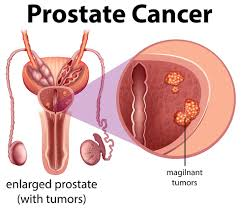A nurse is caring for a client who has prostate cancer and has undergone a prostatectomy. Which of the following should the nurse understand as a potential complication of prostate surgery?
Testicular torsion
Erectile dysfunction
Cystitis
Paralytic ileus
The Correct Answer is B
Choice A reason:
Testicular torsion is a condition where the spermatic cord becomes twisted, cutting off the blood supply to the testicle. It is not a typical complication following a prostatectomy. Testicular torsion is generally an acute condition that affects younger males and is unrelated to prostate surgery.
Choice B reason:
Erectile dysfunction (ED) is a common complication after prostatectomy. The surgery can damage the nerves and blood vessels that control erections, leading to ED. While nerve-sparing techniques aim to reduce this risk, some degree of erectile dysfunction is still possible after the procedure.
Choice C reason:
Cystitis, which is inflammation of the bladder, can occur after a prostatectomy due to the use of a catheter or as a result of the surgery itself. However, it is not as common or as significant a long-term complication as erectile dysfunction.
Choice D reason:
Paralytic ileus, a temporary cessation of bowel movements, can occur after any abdominal surgery due to the manipulation of the intestines or as a side effect of anesthesia. While it can be a complication of prostatectomy, it is typically resolved within a few days to weeks after surgery.

Nursing Test Bank
Naxlex Comprehensive Predictor Exams
Related Questions
Correct Answer is D
Explanation
Choice A reason:
Telling a client that they will be at an increased risk of breast cancer due to fibrocystic breast changes would be incorrect. Fibrocystic breast changes are not directly linked to an increased risk of breast cancer. While the presence of complex fibrocystic changes may slightly elevate the risk, fibrocystic breasts themselves are a common and benign condition.
Choice B reason:
It is not accurate to say that the manifestations of fibrocystic breasts often get worse after menopause. In fact, fibrocystic changes are related to hormone levels, and most women experience relief from these symptoms after menopause when hormone levels decline.
Choice C reason:
Stating that menopause won't have any effect on the manifestations is also incorrect. Menopause typically leads to a decrease in hormone levels, which are associated with fibrocystic breast changes. Therefore, most women see an improvement in their symptoms after menopause.
Choice D reason:
The most appropriate response is that the manifestations usually go away after menopause. Fibrocystic breast changes are linked to hormonal fluctuations, and after menopause, when these fluctuations cease, the symptoms of fibrocystic breasts typically resolve.
Correct Answer is D
Explanation
Choice A reason:
Dyspepsia, commonly known as indigestion, is not typically associated with SIADH. It is a condition characterized by chronic or recurrent pain in the upper abdomen and is not linked to the overproduction of antidiuretic hormone.
Choice B reason:
Osteoarthritis is a degenerative joint disease and does not cause SIADH. It is characterized by the breakdown of joint cartilage and underlying bone, most commonly from middle age onward, causing pain and stiffness, especially in the hip, knee, and thumb joints.
Choice C reason:
Liver cirrhosis can lead to complications that may contribute to fluid imbalance, but it is not a direct cause of SIADH. SIADH is more commonly associated with conditions that affect the central nervous system or certain types of cancer.
Choice D reason:
Lung cancer, particularly small cell lung cancer, is a well-known cause of SIADH. Tumors in the lungs can produce and release antidiuretic hormone independently, leading to the syndrome of inappropriate antidiuretic hormone secretion.
Whether you are a student looking to ace your exams or a practicing nurse seeking to enhance your expertise , our nursing education contents will empower you with the confidence and competence to make a difference in the lives of patients and become a respected leader in the healthcare field.
Visit Naxlex, invest in your future and unlock endless possibilities with our unparalleled nursing education contents today
Report Wrong Answer on the Current Question
Do you disagree with the answer? If yes, what is your expected answer? Explain.
Kindly be descriptive with the issue you are facing.
